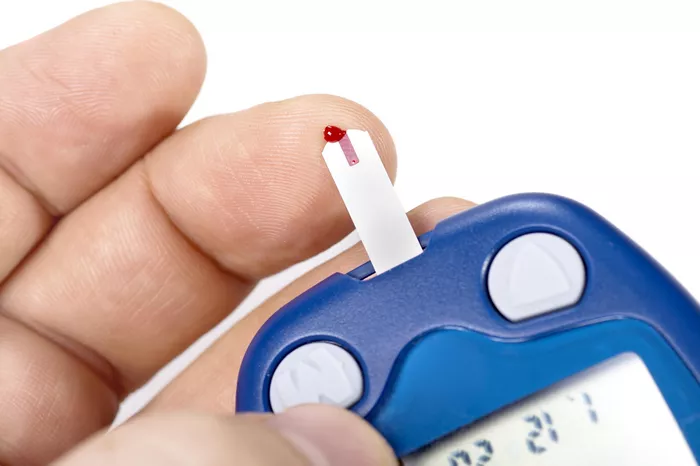Managing diabetes requires careful attention to diet, particularly the types of foods consumed. Among various food categories, fruits are often regarded with caution due to their natural sugar content. However, fruits also provide essential nutrients, vitamins, and minerals that can be beneficial for overall health. This article will delve into what makes certain fruits more suitable for diabetics and ultimately identify the number one fruit that can support diabetes management.
Understanding Diabetes and Diet
Diabetes is a chronic condition that affects how the body processes glucose (sugar). There are two main types of diabetes:
Type 1 Diabetes: An autoimmune condition where the body does not produce insulin.
Type 2 Diabetes: A condition where the body becomes resistant to insulin or does not produce enough of it.
Diet plays a crucial role in managing diabetes, particularly in controlling blood sugar levels. Carbohydrate intake, especially from sugars, needs to be monitored. This includes understanding the glycemic index (GI) of foods, which ranks how quickly a food raises blood sugar levels.
The Role of Fruits in a Diabetic Diet
Fruits are an essential part of a balanced diet. They are rich in vitamins, minerals, antioxidants, and fiber. However, not all fruits are created equal when it comes to their impact on blood sugar levels.
Low Glycemic Index Fruits: These fruits have a slower effect on blood sugar levels and are generally better choices for diabetics. Examples include berries, cherries, and apples.
High Glycemic Index Fruits: These fruits can cause rapid spikes in blood sugar levels and may not be ideal for those managing diabetes. Examples include watermelon, pineapple, and ripe bananas.
Benefits of Including Fruits in a Diabetic Diet
Incorporating fruits into a diabetic diet can offer several benefits:
Nutrient-Rich: Fruits provide essential vitamins (like vitamin C and folate), minerals (like potassium), and dietary fiber.
Hydration: Many fruits have high water content, helping to keep you hydrated.
Antioxidants: Fruits contain antioxidants that can help reduce inflammation and the risk of chronic diseases.
Weight Management: The fiber content in fruits can aid in digestion and promote a feeling of fullness, which can be helpful for weight management.
What Makes a Fruit Ideal for Diabetics?
When determining the best fruit for diabetics, several factors should be considered:
1. Glycemic Index (GI)
Fruits with a low glycemic index are generally better choices for diabetics. The GI measures how quickly a carbohydrate-containing food raises blood glucose levels.
Low GI Foods: These have a GI of 55 or less. Examples include cherries, apples, and pears.
Moderate GI Foods: These have a GI between 56 and 69. Examples include bananas and grapes.
High GI Foods: These have a GI of 70 or more. Examples include watermelon and pineapple.
2. Fiber Content
Fruits that are high in fiber can help regulate blood sugar levels by slowing the absorption of sugar. Fiber also aids in digestion and helps maintain a healthy weight.
3. Nutrient Density
The nutrient density of a fruit indicates how many nutrients it provides relative to its calorie content. Nutrient-dense fruits are beneficial as they provide vitamins and minerals without excessive calories.
4. Portion Control
While fruits are healthy, portion control is essential, especially for those with diabetes. Understanding serving sizes can help manage blood sugar levels effectively.
The Number One Fruit for Diabetics: Berries
After evaluating various fruits based on their glycemic index, fiber content, nutrient density, and overall health benefits, berries emerge as the number one fruit for diabetics. This category includes strawberries, blueberries, raspberries, and blackberries. Let’s explore why berries are particularly beneficial.
1. Low Glycemic Index
Berries typically have a low glycemic index, making them suitable for diabetics. For example:
Strawberries: GI of 41
Blueberries: GI of 53
Raspberries: GI of 32
These low GI values mean that berries have a minimal impact on blood sugar levels compared to other fruits.
2. High Fiber Content
Berries are an excellent source of dietary fiber. For instance:
Raspberries: One cup contains about 8 grams of fiber.
Blackberries: One cup provides about 7 grams of fiber.
This high fiber content helps slow the digestion and absorption of sugar, contributing to better blood sugar control.
3. Rich in Antioxidants
Berries are packed with antioxidants, particularly flavonoids, which have been shown to have beneficial effects on insulin sensitivity and blood sugar regulation.
Anthocyanins: The pigments that give berries their vibrant colors have been linked to reduced risk factors for heart disease and improved insulin sensitivity.
4. Nutrient Density
Berries are not only low in calories but also high in essential vitamins and minerals. They are particularly rich in:
Vitamin C: Important for immune function and skin health.
Manganese: A mineral important for bone health and metabolism.
Folate: Important for DNA synthesis and repair.
5. Versatility in Diet
Berries can be easily incorporated into a variety of meals. They can be enjoyed fresh, added to smoothies, mixed into yogurt, or used as toppings for oatmeal. This versatility makes it easier to include them in a daily diet.
6. Weight Management
The low-calorie content and high fiber in berries can help with weight management. Maintaining a healthy weight is crucial for managing diabetes, as excess weight can lead to insulin resistance.
7. Heart Health
Diabetes increases the risk of heart disease. Berries have been shown to improve heart health by reducing blood pressure and lowering cholesterol levels, which can be particularly beneficial for individuals with diabetes.
How to Incorporate Berries into Your Diet
Incorporating berries into your daily diet can be enjoyable and easy. Here are some practical tips:
1. Breakfast Additions
Smoothies: Blend berries with spinach, almond milk, and a scoop of protein powder for a nutritious breakfast.
Oatmeal: Add a handful of berries to your morning oatmeal for added flavor and nutrients.
Yogurt: Mix berries into Greek yogurt for a protein-rich snack or breakfast.
2. Snacks
Fresh Berries: Enjoy a bowl of mixed berries as a healthy snack.
Nut Butter: Pair berries with almond or peanut butter for a satisfying snack that includes healthy fats.
3. Salads
Berry Salad: Add berries to a mixed green salad with nuts and a light vinaigrette for a refreshing and nutritious meal.
4. Desserts
Berry Parfait: Layer berries with Greek yogurt and a sprinkle of granola for a healthy dessert option.
Frozen Berries: Freeze berries and blend them into a sorbet for a refreshing treat.
5. Baking
Muffins: Incorporate berries into whole grain muffins for a healthier option.
Pancakes: Add blueberries to pancake batter for a delicious breakfast treat.
Other Fruits for Diabetics
While berries are the number one fruit for diabetics, other fruits can also be included in a diabetic-friendly diet. Here are some other low-GI fruits worth considering:
1. Apples
Nutritional Benefits: Apples are high in fiber and vitamin C. They have a GI of around 39.
Incorporation: Enjoy apples as a snack or in salads.
2. Pears
Nutritional Benefits: Pears are rich in fiber and antioxidants. Their GI is about 38.
Incorporation: Pears can be eaten fresh, added to desserts, or included in salads.
3. Cherries
Nutritional Benefits: Cherries have a GI of 20 and are packed with antioxidants.
Incorporation: Cherries can be enjoyed fresh or added to smoothies and desserts.
4. Peaches
Nutritional Benefits: Peaches are low in calories and provide vitamins A and C. Their GI is around 42.
Incorporation: Peaches can be eaten fresh or grilled for added flavor.
5. Oranges
Nutritional Benefits: Oranges are an excellent source of vitamin C and fiber. They have a GI of 40.
Incorporation: Enjoy oranges as a snack or add them to salads for a citrusy twist.
Fruits to Limit or Avoid
While many fruits can be beneficial for diabetics, some should be consumed in moderation or avoided due to their higher glycemic indices. Here are a few examples:
1. Watermelon
GI: Watermelon has a GI of about 76, which can lead to rapid spikes in blood sugar levels.
Recommendation: If consumed, do so in small portions.
2. Pineapple
GI: Pineapple has a GI of around 66.
Recommendation: Limit intake and balance with lower GI foods.
3. Ripe Bananas
GI: Ripe bananas have a GI of about 51, but their high sugar content can be concerning for some diabetics.
Recommendation: Choose slightly unripe bananas for lower sugar content.
4. Grapes
GI: Grapes have a GI of about 59.
Recommendation: Moderation is key; consume in smaller quantities.
Conclusion
Managing diabetes involves making informed dietary choices. While fruits can be a healthy addition to a diabetic diet, it’s essential to choose those with a low glycemic index, high fiber content, and rich nutrient profiles. Berries, particularly, stand out as the number one fruit for diabetics due to their numerous health benefits and versatility. Incorporating a variety of low-GI fruits can further enhance a diabetic-friendly diet, helping to manage blood sugar levels while providing essential nutrients.
By prioritizing fruits like berries, diabetics can enjoy the sweetness of nature without compromising their health. Remember to practice portion control and maintain a balanced diet to ensure optimal management of diabetes. Always consult with a healthcare provider or a registered dietitian for personalized dietary advice tailored to your specific needs.
Related topics:
Which Fruits Are Suitable for Sugar Patients?



























